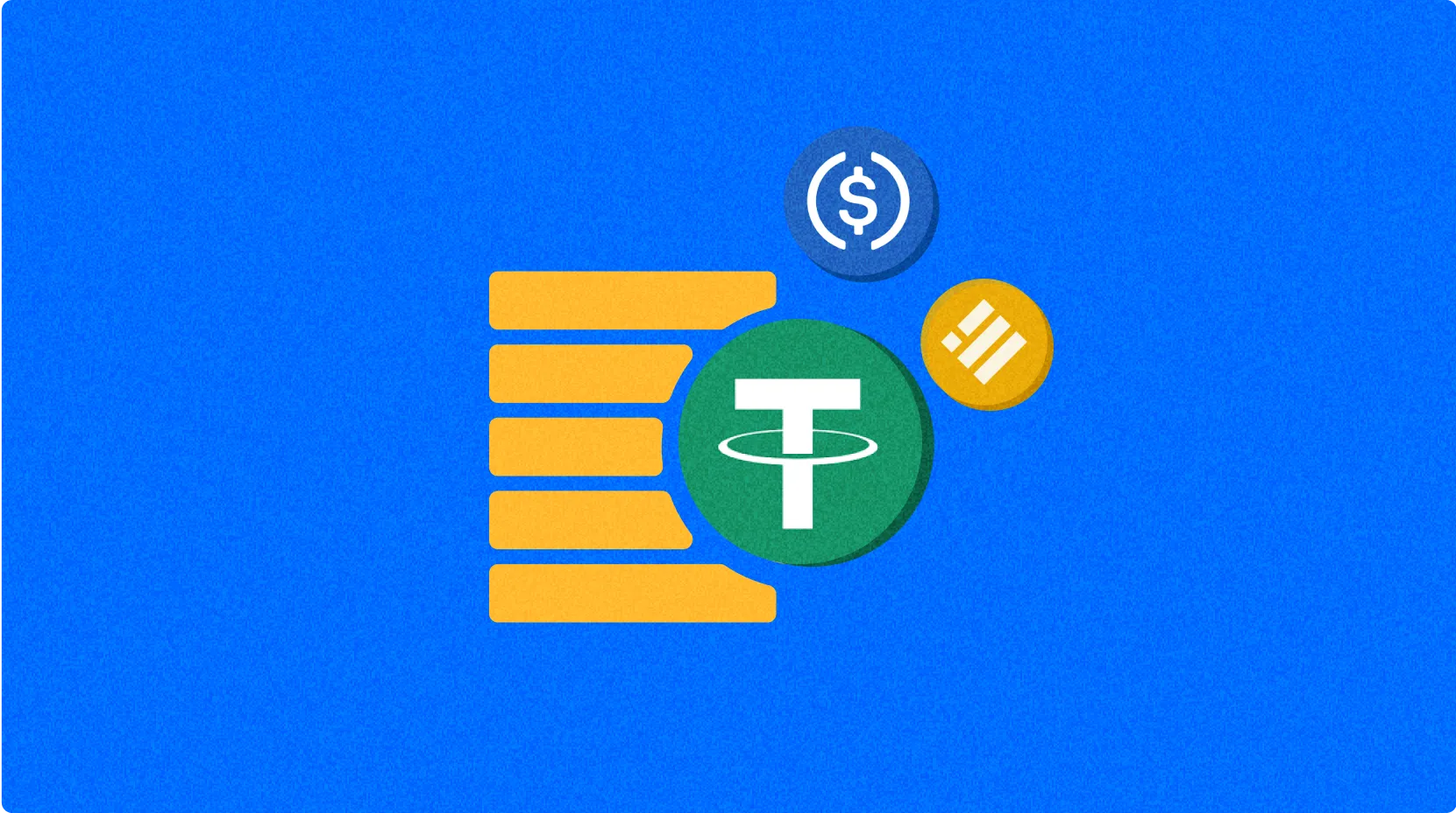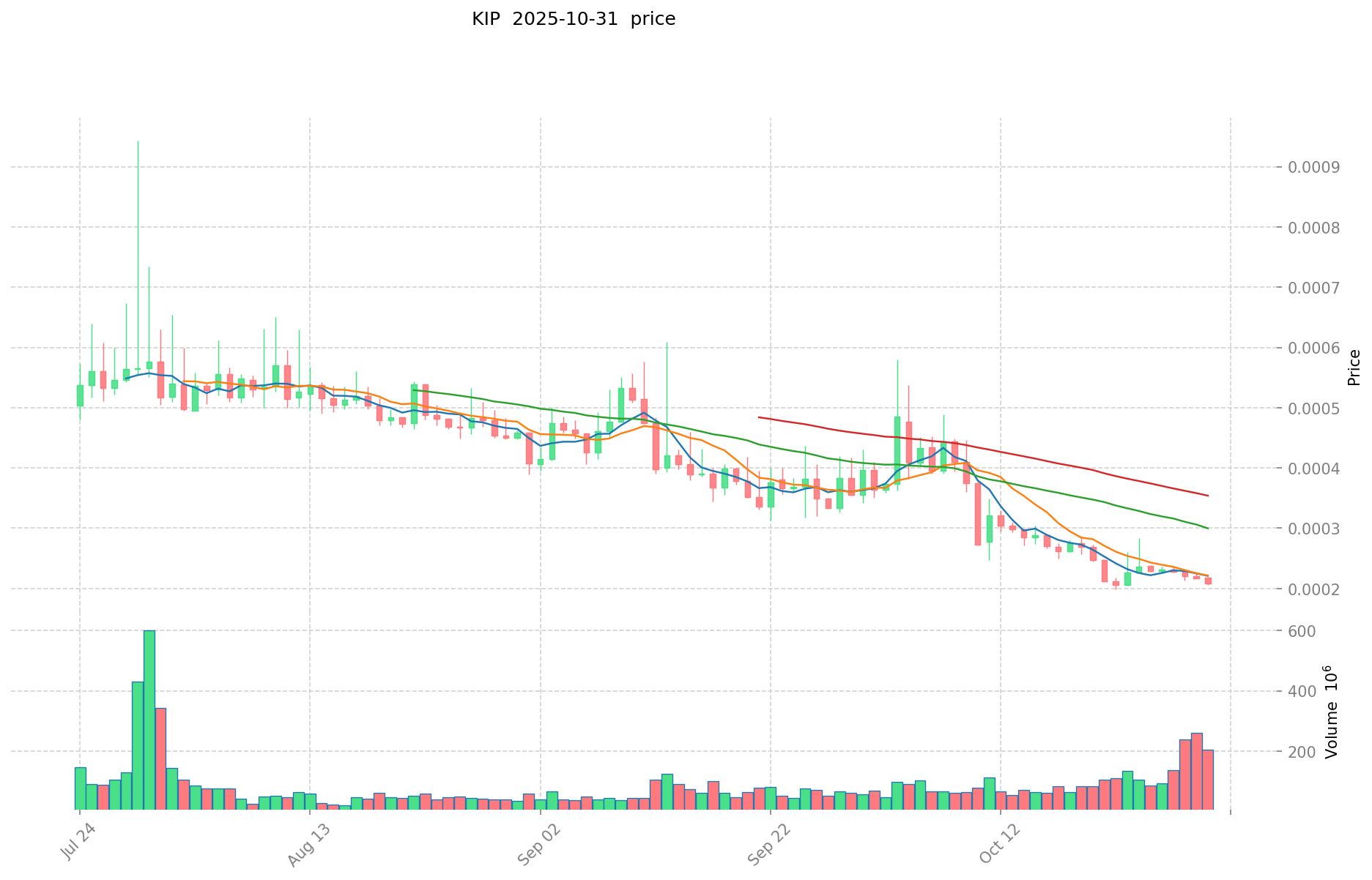KIP nedir: İş yönetiminde Anahtar Performans Göstergelerinin anlaşılması

KIP Protocol’ün Konumu ve Önemi
2022’de yapay zeka alanında doktora sahibi uzmanlar ve sektör tecrübesi olan profesyoneller tarafından KIP Protocol (KIP) kuruldu. Amaç, merkeziyetsiz yapay zeka ürünlerinin geliştirilmesinde karşılaşılan temel sorunları çözmektir.
KIP Protocol, merkeziyetsiz bir yapay zeka çerçevesi olarak DeAI alanında kritik bir rol oynar. KIP, yapay zeka uygulama geliştiricilerinin, model üreticilerinin ve veri sahiplerinin Web3 ekosisteminde yapay zeka varlıklarını dağıtmasına, bağlamasına ve gelir elde etmesine olanak sağlar.
2025 itibarıyla KIP Protocol, DeAI alanında önemli bir aktöre dönüşmüştür. Müşterileri arasında hükümetler, STK’lar, üniversiteler ve büyük Web3 kuruluşları yer almaktadır. Bu yazıda teknik mimarisi, piyasa performansı ve gelecekteki potansiyeli ele alınacaktır.
Kökeni ve Gelişim Süreci
Kuruluş Arka Planı
KIP Protocol, merkeziyetsiz yapay zeka ürünleri geliştirme zorluklarına çözüm getirmek için 2022’de yapay zeka alanında doktora sahibi uzmanlar ve sektör profesyonelleri tarafından geliştirildi. Web3 ve yapay zeka teknolojilerinin yükselişiyle birlikte ortaya çıkan KIP, merkeziyetsiz şekilde yapay zeka varlıklarının dağıtılması ve gelir elde edilmesi için bir çerçeve sunuyor.
KIP Protocol’ün piyasaya sürülmesi, blokzincir teknolojisini yapay zekada kullanmak isteyen geliştiricilere ve kurumlara yeni fırsatlar sundu.
Önemli Dönüm Noktaları
- 2022: KIP Protocol’ün temel teknolojisi ticari olarak doğrulandı.
- 2023: Chainlink hackathon’unda birincilik kazanarak yenilikçi yaklaşımını kanıtladı.
- 2024: Hükümetleri, STK’ları, üniversiteleri ve büyük Web3 organizasyonlarını kapsayan müşteri tabanına ulaştı.
- 2025: Yenilikçi B2C platformlarında tokenlaştırılmış AI Agent’larını başlatarak DeAI geliştirmesinde yeni bir sayfa açtı.
Kurucu ekip ve büyüyen topluluk desteğiyle KIP Protocol, yapay zeka ile blokzincir kesişiminde teknolojisini, güvenliğini ve uygulamalarını sürekli geliştiriyor.
KIP Protocol Nasıl Çalışır?
Merkeziyetsiz Kontrol
KIP Protocol, dünya genelindeki bilgisayarlar (node’lar) üzerinde merkeziyetsiz bir ağda çalışır ve hiçbir merkezi otorite tarafından kontrol edilmez. Bu node’lar işlemleri doğrulamak için birlikte çalışır, sistemin şeffaflığını ve saldırılara karşı dayanıklılığını sağlar, kullanıcıya daha fazla özgürlük ve ağın direncini kazandırır.
Blokzincir Temeli
KIP Protocol’ün blokzinciri, tüm işlemleri kaydeden, herkese açık ve değiştirilemez bir dijital defterdir. İşlemler bloklar halinde gruplanır ve kriptografik hash’lerle birbirine bağlanarak güvenli bir zincir oluşturulur. Herkes kayıtları inceleyebilir ve aracıya gerek kalmadan güven sağlanır.
Adil İşleyiş
KIP Protocol, işlemleri doğrulamak ve hileli faaliyetleri önlemek için bir konsensüs mekanizması kullanıyor olabilir. Katılımcılar staking veya node çalıştırma gibi faaliyetlerle ağın güvenliğini korur ve KIP token’ları ile ödüllendirilir.
Güvenli İşlemler
KIP Protocol, işlemleri güvenceye almak için açık-özel anahtar şifrelemesi kullanır:
- Özel anahtarlar, işlemleri imzalamak için kullanılır
- Açık anahtarlar, sahipliği doğrulamak için kullanılır
Bu sistem, fonların güvenliğini sağlarken işlem gizliliğini korur. Ağ güvenliğini artırmak amacıyla ek güvenlik önlemleri de alınabilir.
KIP’in Piyasa Performansı
Dolaşım Genel Görünümü
31 Ekim 2025 itibarıyla KIP’in dolaşımdaki arzı 1.240.000.000 token, toplam arzı ise 10.000.000.000’dir. Proje sabit arz modelini benimsemektedir.
Fiyat Dalgalanmaları
KIP, 11 Aralık 2024’te genel piyasa yükselişi ve yapay zeka ile ilgili blokzincir projelerine artan ilgiyle birlikte $0,04594 ile tüm zamanların en yüksek seviyesine ulaştı.
En düşük fiyatı ise 22 Ekim 2025’te $0,000198 olarak kaydedildi; bu durum, piyasa genelindeki düşüşler ve AI ile blokzincir alanındaki düzenleyici belirsizliklerden kaynaklanmış olabilir.
Bu dalgalanmalar, piyasa hissiyatını, benimseme eğilimlerini ve merkeziyetsiz yapay zeka sektörünü etkileyen dış faktörleri yansıtmaktadır.

Zincir Üzeri Metrikler
- Günlük İşlem Hacmi: $44.312,94 (ağ etkinliğini gösterir)
- Aktif Adresler: 25.159 (kullanıcı etkileşimini yansıtır)
KIP Ekosistemi: Uygulamalar ve Ortaklıklar
Temel Kullanım Alanları
KIP ekosistemi çeşitli uygulamaları destekler:
- Merkeziyetsiz Yapay Zeka: Yapay zeka uygulaması geliştiricileri, model yaratıcıları ve veri sahipleri Web3 ortamında yapay zeka varlıklarını dağıtabilir, bağlayabilir ve gelir elde edebilir.
- B2C Platformları: Yenilikçi platformlar, KIP’i DeAI geliştirmede öncü konuma taşıyan tokenlaştırılmış AI Agent’larını piyasaya sürmektedir.
Stratejik İşbirlikleri
KIP, hükümetler, STK’lar, üniversiteler ve büyük Web3 organizasyonları ile ortaklıklar kurarak teknik kapasitesini ve piyasa etkisini artırıyor. Bu işbirlikleri, KIP ekosisteminin büyümesi için sağlam bir temel sağlıyor.
Tartışmalar ve Zorluklar
KIP’in karşılaştığı başlıca zorluklar şunlardır:
- Teknik Engeller: Güçlü merkeziyetsiz yapay zeka altyapısı oluşturmak
- Düzenleyici Riskler: AI ile ilgili kripto varlıkların denetime tabi olması
- Rekabet Baskısı: Diğer AI odaklı blokzincir projelerinin yükselişi
Bu konular, topluluk ve piyasa içindeki tartışmaları tetikleyerek KIP’in sürekli gelişimini teşvik etmektedir.
KIP Topluluğu ve Sosyal Medya İklimi
Topluluk Heyecanı
KIP topluluğu oldukça aktif; 31 Ekim 2025 itibarıyla 25.159 sahip bulunuyor. X platformunda KIP ile ilgili gönderiler ve etiketler sıkça gündem oluyor, topluluk DeAI alanındaki potansiyelini tartışıyor. Tokenlaştırılmış AI Agent’larının tanıtımı, toplulukta büyük heyecan yarattı.
Sosyal Medya Eğilimleri
X platformunda görüşler çeşitlilik gösteriyor:
- Destekçiler, KIP’in merkeziyetsiz yapay zekaya yenilikçi yaklaşımını övüyor ve bunu “Web3’te yapay zekanın geleceği için temel” olarak görüyor.
- Eleştirenler ise fiyat oynaklığı ve yapay zekanın merkeziyetsiz şekilde uygulanmasındaki zorluklara odaklanıyor.
Son dönemdeki eğilimler, proje geliştikçe temkinli bir iyimserliğin hakim olduğunu gösteriyor.
Gündemdeki Konular
X kullanıcıları KIP’in yapay zekanın demokratikleşmesindeki rolünü, olası kullanım alanlarını ve merkeziyetsiz sistemde AI yönetiminin zorluklarını tartışıyor, bu sayede hem dönüştürücü potansiyelini hem de kitlesel benimsenme önündeki engelleri göz önüne seriyor.
KIP Hakkında Daha Fazla Bilgi Kaynağı
- Resmi Web Sitesi: Özellikler, kullanım alanları ve güncellemeler için KIP’in resmi web sitesini ziyaret edin.
- Whitepaper: KIP whitepaper’ı teknik mimari, hedefler ve vizyon hakkında bilgi verir.
- X Güncellemeleri: KIP, X platformunda @KIPprotocol hesabıyla teknik gelişmeler, topluluk etkinlikleri ve iş ortaklığı haberlerini paylaşır.
KIP Gelecek Yol Haritası
- Sürekli Gelişim: Merkeziyetsiz yapay zeka çerçevesini geliştirmeye devam etmek
- Ekosistem Hedefleri: AI geliştiricileri ve Web3 kuruluşlarıyla işbirliklerini artırmak
- Uzun Vadeli Vizyon: Web3’te merkeziyetsiz yapay zeka entegrasyonunda standart olmak
KIP’e Nasıl Katılabilirsiniz?
- Satın Alma Kanalları: KIP’i Gate.com üzerinden satın alabilirsiniz.
- Saklama Çözümleri: Güvenli Web3 cüzdanlarında saklayın.
- Yönetişimde Katılım: Olası DAO uygulaması için güncellemeleri takip edin.
- Ekosistemde Geliştirin: KIP geliştirici dokümantasyonunu inceleyerek katkı sağlayabilir veya AI uygulamaları geliştirebilirsiniz.
Özet
KIP, yapay zeka ile blokzincir kesişimini yeniden şekillendiriyor; merkeziyetsiz yapay zeka altyapısı, tokenlaştırılmış AI Agent’lar ve Web3 entegrasyonu sunuyor. Aktif topluluğu, kapsamlı kaynakları ve güçlü iş ortaklıkları ile kripto para ve yapay zeka alanlarında öne çıkıyor. Yapay zeka yönetişimi ve merkeziyetsizlikteki zorluklara rağmen, KIP’in yenilikçi yaklaşımı ve net yol haritası, onu merkeziyetsiz yapay zeka teknolojisinin geleceğinde önemli bir oyuncu konumuna getiriyor. İster yeni başlayan ister deneyimli olun, KIP, AI ve blokzincir bütünleşmesinin evriminde izlenmeye ve katılım göstermeye değer bir projedir.
Sıkça Sorulan Sorular
Kip kelimesi argo olarak ne anlama gelir?
İngiliz argosunda kip, uyumak veya kestirmek anlamına gelir. Hem kısa bir dinlenme hem de tam bir gece uykusu için kullanılabilir.
KIP neyin kısaltmasıdır?
KIP, Klaytn Improvement Proposal’ın kısaltmasıdır; Klaytn blokzincir ağına gelişim önerileri sunmak için kullanılan bir protokoldür.
Kip Hollandaca’da ne demektir?
Kip, Hollandaca’da tavuk anlamına gelir. Tekil olarak kullanılır, çoğulu ‘kippen’ şeklindedir. Hollanda mutfağında kip, pek çok yemekte tercih edilen bir et türüdür.
Jimnastikte kip nedir?
Jimnastikte kip, sporcuların kalçalarını büküp hızla uzatarak momentum kazandığı; artistik jimnastik rutinlerinde atlama veya başka hareketlere başlamak için kullanılan bir tekniktir.

AITECH Nedir: Yapay Zeka Teknolojisinin Geleceği ve Toplum Üzerindeki Etkileri

ChainOpera AI (COAI) nedir ve Yapay Zekâ ile Blockchain’i nasıl entegre eder?

XNA nedir: Sektörde Devrim Yaratan Oyun Geliştirme Framework’ü

AWS nedir: Modern İşletmeleri Güçlendiren Bulut Bilişim Platformu

RECALL nedir: Bilgi Getirme Etkinliğini Ölçen Temel Ölçütü Anlamak

HOLO nedir: Görsel deneyimlerin geleceğini şekillendiren devrim niteliğindeki holografik ekran teknolojisi

Yeni Başlayanlar İçin Private Wallets Rehberi

Starknet ile Katman 2 Ölçeklendirme Çözümlerine Kapsamlı Rehber

OMG nedir: Kısaltmanın Kökeni, Kullanımı ve Dijital İletişimdeki Kültürel Etkisi







